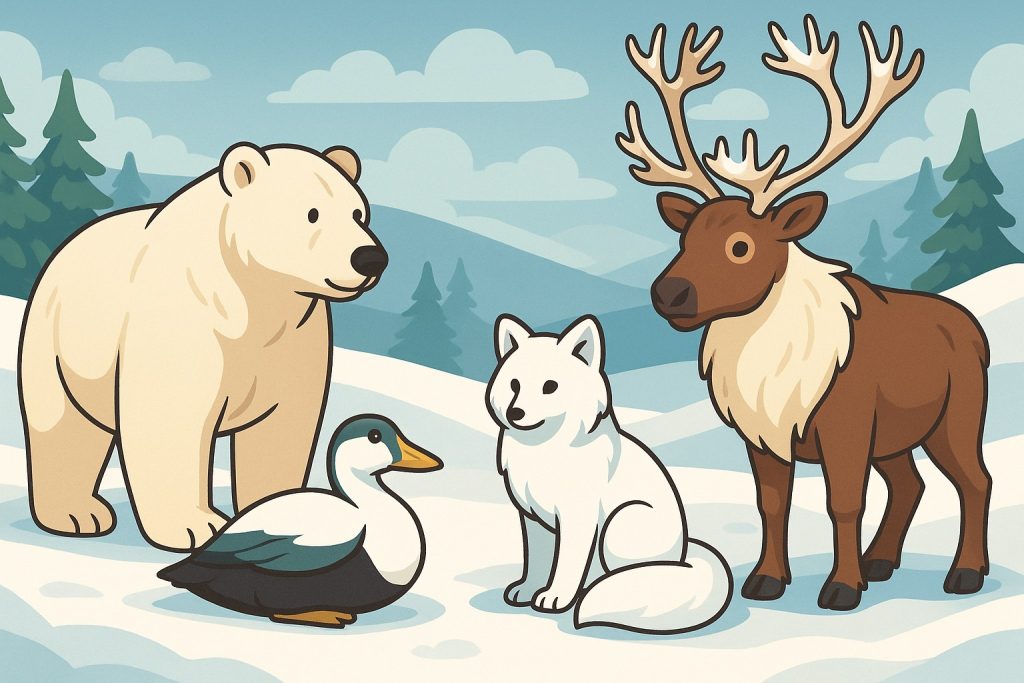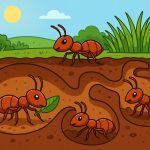Surviving in cold environments like the Arctic, Alpine mountains, or taiga forests requires remarkable biological and behavioral adaptations. From thick fur to seasonal migrations, animals have developed diverse strategies to withstand freezing temperatures, scarce food, and long winters.
Physical Adaptations to Cold
Animals living in cold climates often evolve special physical features to conserve heat and energy:
- Thick fur or feathers trap air and create insulation (e.g., polar bears, arctic foxes, snowy owls)
- Fat layers (blubber) under the skin store energy and insulate (e.g., seals, whales, walruses)
- Compact body shapes (shorter limbs and tails) reduce surface area and heat loss
- Dark skin or fur helps absorb sunlight for warmth
- Color change in winter, like white fur in arctic hares or ptarmigans, provides both camouflage and heat reflection
These traits are essential for keeping warm in extreme cold.
Behavioral Strategies for Cold Survival
Beyond physical traits, animals also change behavior to avoid or cope with cold:
- Hibernation: Deep sleep-like state with slowed metabolism to conserve energy (e.g., bears, hedgehogs)
- Migration: Traveling to warmer regions during winter (e.g., swans, caribou, monarch butterflies)
- Burrowing or denning: Hiding in insulated nests, burrows, or dens (e.g., arctic ground squirrels, wolves)
- Huddling: Staying close together to share body warmth (e.g., penguins, rodents)
These strategies help reduce energy loss when resources are limited.
Unique Cold-Climate Specialists
Some animals have extraordinary adaptations:
- Antifreeze proteins in fish like the Antarctic icefish prevent their blood from freezing
- Reindeer have specialized nasal passages that warm the air they breathe
- Snow leopards have massive tails used as scarves while resting
- Wolverines can walk across snow without sinking thanks to large paws
Each species tailors its adaptations to its specific environment.
Young Animals in the Cold
Raising offspring in frigid climates is challenging. Animals protect their young by:
- Building insulated nests or dens (foxes, wolves)
- Feeding them high-fat milk for fast growth (seals)
- Timing births for spring or early summer when conditions are easier
In many species, both physical closeness and parental care are vital for young survival.
Why Cold Adaptations Matter
These adaptations reflect the power of evolution and the resilience of life. Understanding them helps:
- Conserve endangered species affected by climate change
- Design better clothing and shelters using bioinspired innovations
- Appreciate biodiversity in Earth’s most extreme regions
As temperatures shift globally, many cold-adapted species face new challenges.
Glossary
- Insulation – Material or structures that trap heat and prevent loss
- Blubber – A thick layer of fat under the skin in marine animals
- Hibernation – A long period of inactivity to conserve energy in winter
- Migration – Seasonal movement from one region to another
- Antifreeze proteins – Natural substances that prevent bodily fluids from freezing


